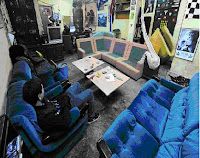
By Aitor Z and Amaia L
What does it mean to be bilingual (or multilingual)? What does it mean to be “bicultural”? Do the two concepts necessarily coincide? What are “language,” “culture,” “race,” “ethnicity” and “nationality”? What is their political significance as well as their importance in our daily lives? How do these concepts sometimes conflict and sometimes overlap?
 This project explores these ideas by connecting high school students who live
This project explores these ideas by connecting high school students who live
Two groups of 40 students are participating, who are in their final year of secondary school (12th graders at Thomas Jefferson High School in Los Angeles; 2nd year bachillerato students at the Txindoki branch of BIP (Beasain Institutua Publika) in Beasain. Each student is partnered with a student in the other country. They will write emails to each other over the course of a month. Students will also create projects to educate each other their respective cultures, histories and politics.

 Here we also have “Gaztetxe” that means house of young people, and the
difference between that and the local is that in the Gaztetxe can enter anybody
and also the house is occupied, so nobody pays every month. We usually make
concerts and big parties in Gaztetxes because they used to be separated from
other houses, so there are not neighbours.
Here we also have “Gaztetxe” that means house of young people, and the
difference between that and the local is that in the Gaztetxe can enter anybody
and also the house is occupied, so nobody pays every month. We usually make
concerts and big parties in Gaztetxes because they used to be separated from
other houses, so there are not neighbours.